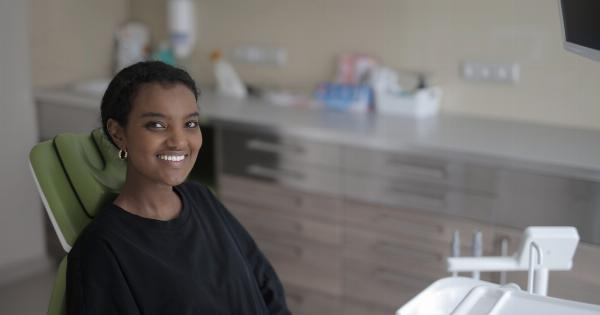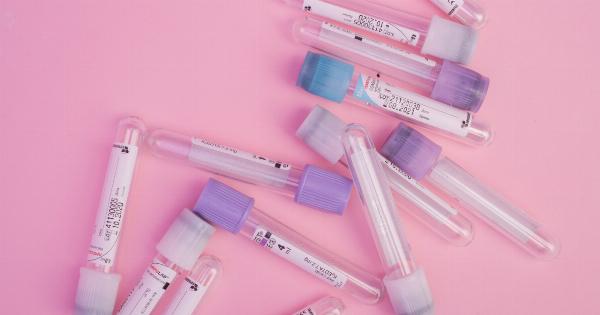Human papillomavirus (HPV) is a common sexually transmitted infection (STI) that affects both men and women. However, contrary to popular belief, HPV can also be transmitted through non-sexual means.
While sexual contact is the primary mode of transmission, it is essential to understand the various ways in which HPV can be spread to take necessary precautions. In this article, we will explore the different non-sexual ways of transmitting HPV and discuss important preventive measures.
1. Mother-to-child transmission
One of the most significant non-sexual modes of HPV transmission is from an infected mother to her baby during childbirth. This is known as vertical transmission.
While the chances are relatively low, it is still essential to take precautions to minimize the risk. In most cases, the virus is harmless to the baby and does not cause any adverse effects. However, some types of HPV can lead to serious medical conditions such as respiratory papillomatosis.
2. Skin-to-skin contact
HPV can easily spread through direct skin-to-skin contact, even without sexual intercourse. This means that any area of the skin that comes into contact with an infected person’s skin, including the genitals, can transmit the virus.
Common modes of transmission include sharing personal items such as towels, clothing, or even using the same fitness equipment without proper hygiene practices. The virus can enter the body through tiny cuts or abrasions on the skin.
3. Close personal contact
Close personal contact with an individual infected with HPV can increase the likelihood of transmission. This can occur through activities such as hugging, kissing, or engaging in close physical contact with infected individuals.
HPV can be present on various external body parts, including the hands, fingers, and mouth, making it highly transmissible even without sexual activity.
4. Sharing personal items
Sharing personal items, such as razors, toothbrushes, or other personal care tools, can lead to the transmission of HPV. The virus can survive on surfaces for a short duration, making it possible to contract HPV if you use infected items.
It is advisable to avoid sharing personal care items to minimize the risk of HPV transmission.
5. Non-sexual intimate activities
Engaging in non-sexual intimate activities, such as genital-to-genital contact or oral-genital contact, can transmit HPV. Although these activities are not classified as sexual intercourse, they can still lead to HPV transmission.
It is important to note that condoms do not provide complete protection against HPV, as the virus can be present on areas not covered by a condom.
6. Medical procedures
In rare circumstances, HPV transmission can occur through medical procedures involving contaminated equipment or inadequate sterilization practices. This includes procedures such as surgeries, dental work, or even tattooing and body piercing.
It is crucial for healthcare professionals to adhere to strict sterilization protocols to prevent the spread of HPV and other infectious diseases.
7. Environmental surfaces
While the risk is relatively low, HPV can survive on environmental surfaces, such as public toilets, swimming pool handrails, or gym equipment.
There is a minimal chance of transmission if you come into contact with such surfaces and have cuts or abrasions on your skin. However, maintaining good hygiene practices, such as regular handwashing and avoiding direct contact with potentially contaminated surfaces, can help reduce the risk.
8. Childhood transmission
Children can also contract HPV through various non-sexual means. For example, during the diaper-changing process, an infected adult’s hands can come into contact with the child’s genital area, leading to transmission.
Additionally, children who engage in close physical contact or share personal items with infected playmates can also contract the virus.
9. Occupational exposure
Occupational exposure to HPV can occur in specific professions, such as healthcare workers or laboratory personnel who handle specimens or infected material.
These professionals are at a higher risk of exposure to HPV due to their close proximity to infected individuals or samples. Following strict infection control and hygiene protocols is crucial in minimizing the risk of transmission.
10. Autoinoculation
Autoinoculation refers to the spread of HPV from one part of the body to another. This can occur when an infected individual touches or scratches an infected area and then touches another part of their body, potentially spreading the virus.
It is particularly common in cases of genital warts, where the virus can easily spread to other genital areas or even the hands.
Conclusion
While sexual contact remains the primary mode of HPV transmission, it is essential to be aware of the various non-sexual ways in which the virus can spread.
Taking preventive measures such as practicing good hygiene, avoiding skin-to-skin contact with infected individuals, and refraining from sharing personal items can significantly reduce the risk of contracting HPV. Furthermore, vaccination against HPV is strongly recommended to provide additional protection, regardless of the mode of transmission.































